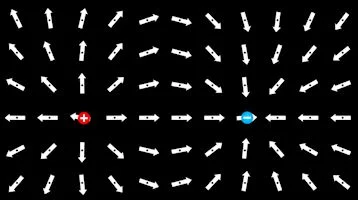Making for Learning - Electrical Connections 3
Helping students understand electricity has been a challenge for a long time, and teachers had varying degrees of success across the year. National programs and computer-based tools have come and gone, and new ones are available. However, since the topic is so ethereal (try looking for an electron), it is even more important to make concrete connections to real-world examples for students.
As with Making, doing is better than watching, listening, or reading, so using a simulation and seeing how it responds to changes is more effective than watching a youtube video on the topic. When you are looking for age appropriate (NGSS includes these topics in middle and high school level), here are a few additional simulations and connections to make to other concepts with which the students may be familiar. While the connections are not perfect across the common domains, the goal is to help students create a construct to understand the topic. Fine tuning the learning can happen after that.
Gravity Fields and Electric Fields
This model uses the concept of height (gravitational potential energy) and falling through a water wheel (conversion of gravitational energy to another form) to simulate electricity through a circuit. Charges are lifted up by the battery (electric potential increase) and fall down through the resistor (converting to heat or light or both) and continue through the cycle. See this link for the animation...
An analogy to current in an electric circuit is the water cycle, where water molecules are elevated (solar energy added to cause evaporation), then fall as rain, and the water molecules go around the cycle. The water wheel is a tool used to convert the energy in the water to another form of energy - however, the water molecules continue - they are not converted into anything else. Similarly, the electric charges continue around the circuit - they are not converted into light or heat.
Another example is the concept of the gravity well….familiar to many kids who have been to a science museum, where you can roll pennies around a vortex and they fall into a black hole. Here is a 3-D picture of a similar shape, the electric field around a negative charge.
The opposite of the well is a hill. This shows the electric field around a positive charge in 3-D. It is easy to imaging the motion of another positive charge in this field.
We are using the concepts of hills and wells. Which way would an object be pushed by gravity in these situations? This is the concept of the gravitational force field. Objects on the side of the hill will head down towards the flat, and (depending on where they start) maybe down into the well. Here is a 3D image of a fixed positive charge near a fixed negative charge.
This next picture shows this force field as a map of arrows, showing the direction of the forces, using positive charge for the hill and negative charge for the well. The arrows are away from the positive charge (high point) and towards the negative charge.
The last concept is lines of equal potential energy, or equal height in the case gravitational potential energy. The picture on the left is for a positive electric field, the one on the right a mountain. Downhill (the direction of the force) is perpendicular to these equal potential lines. With gravity, we call these lines contour lines of equal altitude. With electricity, they are equipotentials of equal voltage.
In all of these analogies, they are generalizations, to give students comparative contexts for learning. As students progress into deeper understanding, the contexts will be adjusted and fine tuned to more precise models. However, in the absence of models and visualizations students will be left to their own devices to make sense of electric currents and forces.
Sources for animations:
Charges and Fields (PHET) https://phet.colorado.edu
CalcPlot3D (Paul Seeburger, Monroe Community College)





